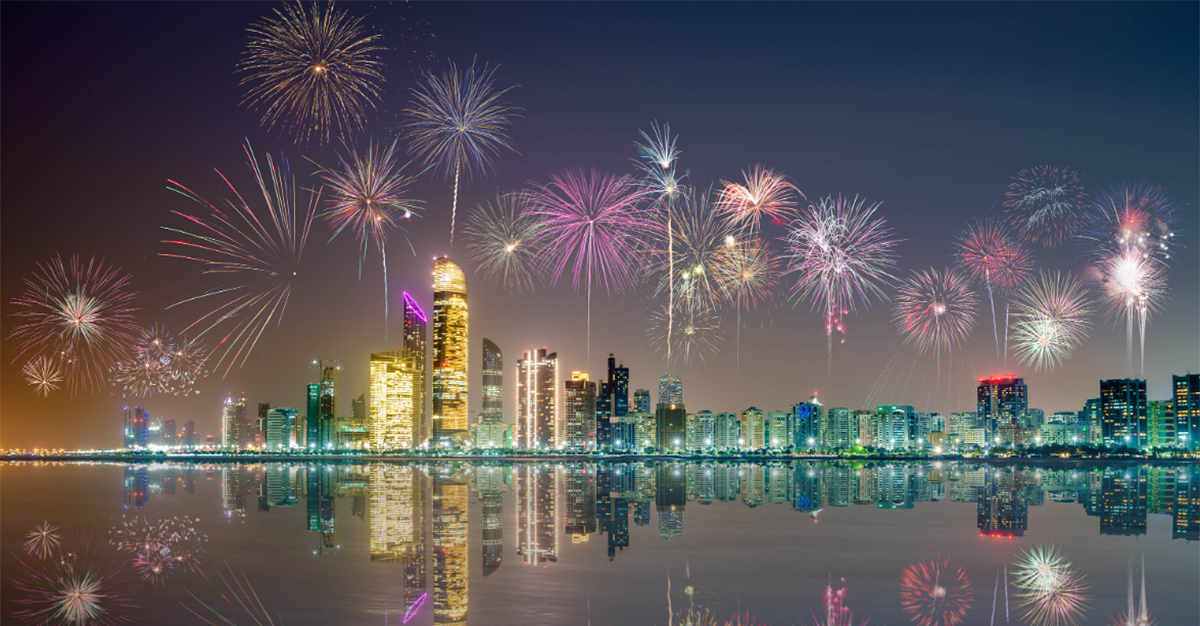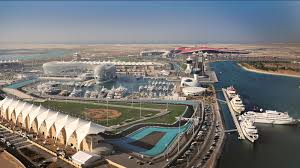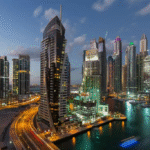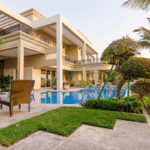Now Reading: Discover How Abu Dhabi is Turning Into a Green Paradise Today 2025!
-
01
Discover How Abu Dhabi is Turning Into a Green Paradise Today 2025!
Discover How Abu Dhabi is Turning Into a Green Paradise Today 2025!

Table of Contents
Abu Dhabi, the beautiful capital of the United Arab Emirates, is known worldwide for its luxurious skyscrapers, vast deserts, and futuristic architecture. But what is truly surprising many residents and tourists is how this modern city is transforming itself into a greener, healthier place to live. From public parks to nature reserves, Abu Dhabi’s efforts to create green spaces are not only improving the environment but also making life better for everyone.
Why Green Spaces Matter in Abu Dhabi

Abu Dhabi is located in a desert region where water is scarce, temperatures can reach extreme highs, and sand dunes stretch for miles. Creating green spaces here is not an easy task. But these spaces are important for many reasons:
- Environmental Benefits:
Green spaces help reduce air pollution, lower the city’s temperature, and provide shade. Plants absorb carbon dioxide and release oxygen, which improves air quality. This is important for Abu Dhabi as the city continues to grow and welcomes millions of tourists every year. - Health and Well-being:
Public parks and green areas give people a place to walk, jog, cycle, or simply relax. Spending time in nature has been proven to reduce stress, improve mood, and increase physical activity. - Wildlife Protection:
Nature reserves and protected parks offer safe homes to birds, insects, and other animals. They help maintain biodiversity, which is vital for the balance of the natural world. - A Better Lifestyle:
Families enjoy picnics, children play safely, and communities gather in these spaces, making life in the city more enjoyable and friendly.
Abu Dhabi’s Green Projects Changing the City

In recent years, Abu Dhabi’s government and private developers have invested heavily in creating more green areas. Some of the most exciting projects include:
1. Mangrove National Park
Located just outside the city center, Mangrove National Park is one of Abu Dhabi’s natural wonders. Covering 19 square kilometers, this protected area is home to mangrove trees, flamingos, herons, and crabs. Visitors can explore the park by kayaking or walking on special pathways. The park is not only beautiful but also helps protect the coastline from erosion and keeps marine life healthy.
2. Umm Al Emarat Park
Umm Al Emarat Park is one of the most popular public parks in Abu Dhabi. This large green space includes botanical gardens, a shade house, and even an animal barn where children can meet camels, goats, and other farm animals. With play areas, picnic spots, and jogging tracks, the park is designed for people of all ages. It also hosts weekend markets and cultural events.
3. Al Reem Central Park
Located on Al Reem Island, this modern park features green lawns, running tracks, cycling paths, and sports courts. The park is designed for urban residents who want a break from high-rise apartment living. The beautiful sea views and carefully planted gardens make this park a favorite among locals.
4. Jubail Mangrove Park
Another gem is Jubail Mangrove Park, where visitors walk along a floating boardwalk right through the mangrove forests. Educational displays teach about the importance of mangroves in fighting climate change and protecting wildlife. It is a peaceful escape from the city noise and a great place for birdwatching.
5. Desert Conservation Reserves
Even the deserts around Abu Dhabi are being turned into eco-friendly zones. The Al Wathba Wetland Reserve is one example. This area, once just empty desert, now welcomes thousands of flamingos every winter and is home to 250 species of birds. Protected desert areas ensure that the natural beauty of the UAE remains for future generations.
Green Building and Urban Planning
It’s not only parks that make Abu Dhabi greener. The city is also leading in “green building” design. New buildings are required to meet environmental standards such as Estidama, the UAE’s sustainability program. These buildings use solar power, energy-saving systems, and recycled materials. Neighborhoods are also designed with small parks, tree-lined streets, and water features to make life more pleasant for residents.
Sustainability Vision 2030
Abu Dhabi’s green development is part of its larger Abu Dhabi Vision 2030, a government plan to create a sustainable and prosperous city. The plan includes:
- Planting more native trees and plants.
- Expanding public transport to reduce car pollution.
- Creating more pedestrian and cycling paths.
- Supporting eco-tourism to protect natural sites.
This vision shows the city’s commitment to fighting climate change, protecting the environment, and improving the health of its people.
What Residents and Visitors Say
Many residents are enjoying these changes. “I love spending weekends at Jubail Mangrove Park,” says Amal, a university student. “It’s peaceful, beautiful, and I feel connected to nature even in the middle of the city.”
Tourists are also noticing the difference. “I never expected to see such green spaces in Abu Dhabi,” says John, a visitor from the UK. “It’s great to see a city caring about the environment while still being modern and exciting.”
Challenges Ahead
While progress is being made, there are challenges. Abu Dhabi’s hot climate and water scarcity mean that maintaining green areas requires careful planning. Using too much water for plants could harm the environment, so the city is focusing on native species that need less water and on recycled water for irrigation.
There is also the need to balance development with nature protection. As the city grows, planners must make sure that green spaces are not lost to new buildings or roads.
Conclusion: A Greener Future for Abu Dhabi
Abu Dhabi’s effort to create and protect green spaces is making the city more beautiful, healthy, and sustainable. These changes show that even in a desert city, it is possible to live close to nature. With parks, reserves, and eco-friendly buildings, Abu Dhabi is setting an example for other cities in the region and the world.
As the city moves toward its 2030 vision, its green spaces will play a big role in making life better for everyone – residents, tourists, and the planet itself.
Read More:- Shobha Realty Launches Its Most Luxurious Project Yet—Full Details Inside 2025






















